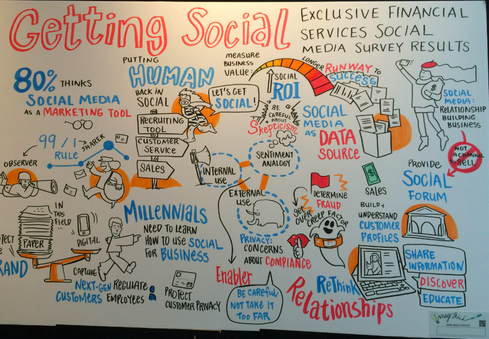10:55 AM
Financial Services Institutions Gear Up for Social Intelligence
While financial services institutions are investing heavily in social media, more than two thirds, or 68%, are not measuring the return on investment (ROI), and only half of those respondents intend to create those metrics, according to the survey.
ROI metrics are lacking for social media
The metrics used to track social media results that are easily made available include: the number of followers, comments, and an increase in page views for company sites.
However, David O’Connell, senior analyst at Aite Group, focusing on banking, warned that ROI may be the wrong metric for measuring social media. “ROI tends to have as its audience highly trained finance folks who are skeptical. Many of the benefits from social networking have been very indirect and [it is] hard to achieve them. They are achieved over the long term and they are not readily quantified.” He suggests there should be other quantifiable metrics, such as the number of pricing insights that led to sales per month.
“People look at social and try to measure it in the same way, but you have to give it [a] much longer runway for success,” said Uddipan Bagchi, insurance practice head, Dell Services, on the panel.

Carlson said Wells Fargo is focusing on "return-on-engagement" at this point and not return-on-investment. “We call it social media with training wheels. That’s the approach.” She explained that internally the 99% rule applies. “So, 90% of employees are observing, ready to help with the sale, while 9% are not involved, and 1% are doing something.”
Even if the metrics around social media are uncertain, using social media to engage with customers is still important. “Social media is beginning to have its impact on the business, but businesses are really a long way from being social,” commented Burk Buchler, managing director, social media services, Dell Services, at the event.
“It really starts with understanding your footprint, what are your fans and followers, what is the share of voice, what is the volume of conversations,” Buchler said. “Certainly in the 21st century, those that are really going to succeed are going to be social businesses that are committed to forging deep, meaningful relationships with their customers.”
Although social is being relegated to small PR departments or marketing teams, Buchler said. “I think the potential for technology can be used across the organization, whether it’s recruiting, product development, customer service, or sales.”
Younger customers expect their financial institutions to interact with them through social media. “It used to be that business was focused on baby boomers and so their way of doing business was different. Now you have Gen X and Gen Y and they are accustomed to a very tailored business. You have to accommodate both areas and now you are seeing a blend,” said Karen Weidman, business development lead, Dell Services North American BFSI Insurance. Noting that women over 50 are the fastest growing group on Facebook, Weidman says insurers have to provide both “face-to-face” and the ability to ask questions and provide immediate responses that social media offers.
Ivy is Editor-at-Large for Advanced Trading and Wall Street & Technology. Ivy is responsible for writing in-depth feature articles, daily blogs and news articles with a focus on automated trading in the capital markets. As an industry expert, Ivy has reported on a myriad ... View Full Bio
























